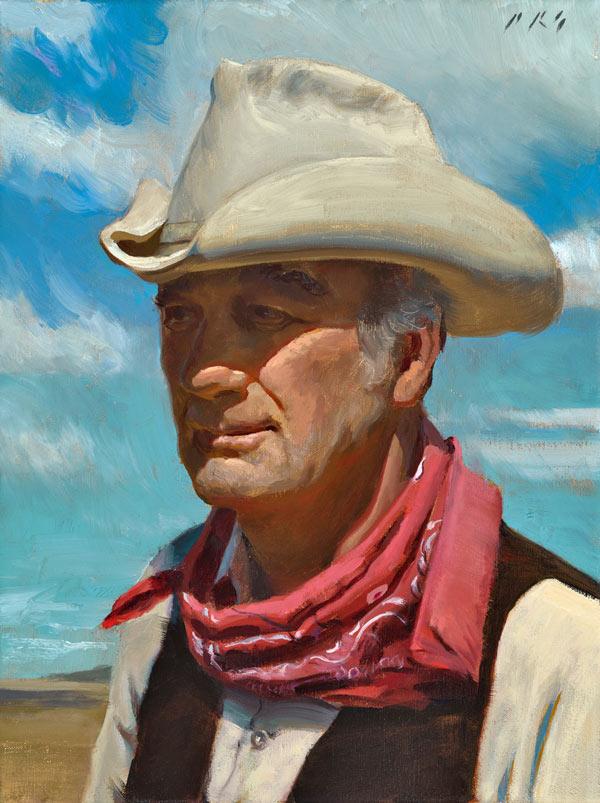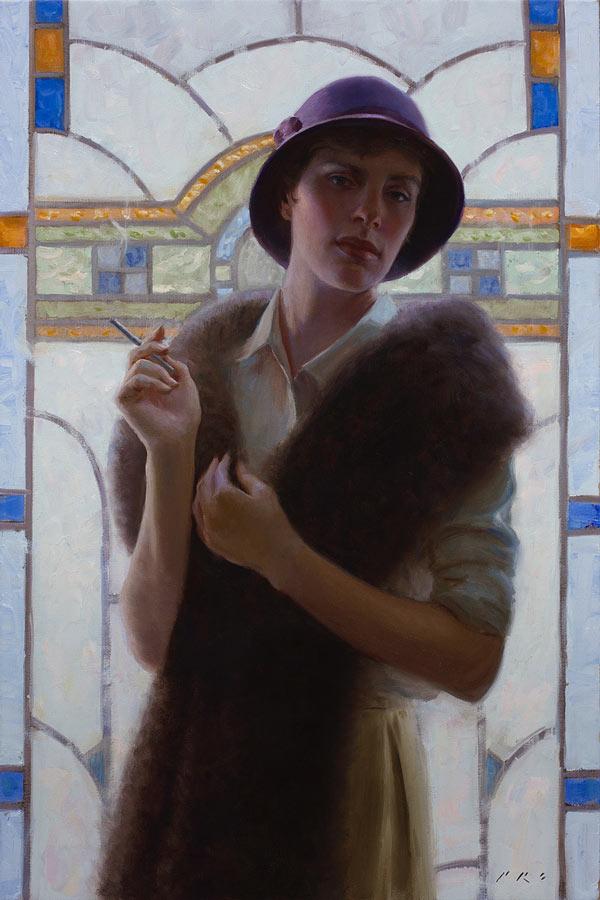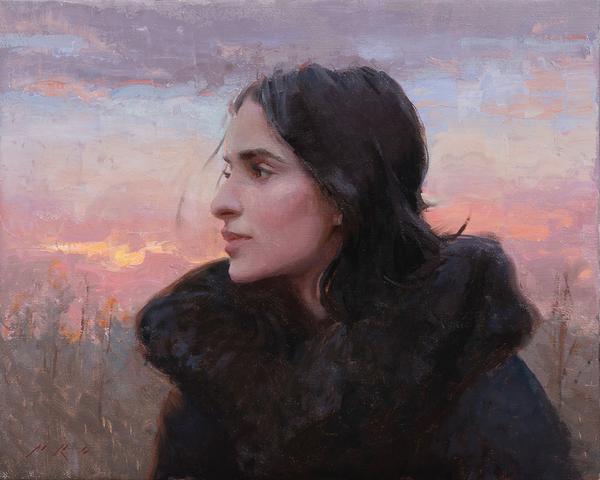On Painting Portraits > Tony Pro was born in Northridge, California, in 1973. He grew up in Southern California under the guidance of his father, Julio Pro (1929-2013), a successful Southwest wildlife painter. Tony received his Bachelor of Arts degree in Graphic Design while simultaneously studying drawing with the late illustrator Glen Orbik (1963-2015). It was at this time that he learned the value of academic figure drawing and the importance of applying these strict study principles to his craft.
What is it that portraiture and figurative work give you as an artist?
I’ve always loved painting people, as it’s a direct connection to others … especially portraiture; I love putting the spirit of a person on canvas. It still baffles me that moving paint around on canvas using sticks with hair can create a person’s image and likeness looking back at you.

Could you walk us through your process for painting portraits? What are the steps you go through to create a painting?
A lot of my work starts with ideas in my head. I don’t always start with sketches; I usually compose things digitally since I am used to that, being a graphic designer for 25 years.
From there I can work out all the color and composition issues and I can move to the canvas and begin the work.
For finished paintings, I work in layers. I start with putting in my middle tone and moving to all the darks in a monochromatic fashion. Then from there, I start with all my midtones, and I key my lightest light and darkest dark so I know my value range early on. Sometimes I will glaze if need be to tone certain areas.
You work alla prima. To do that, what do you have to have figured out before you lay down that first stroke of paint?
I only work alla prima if I am painting from life, which is not that often these days. Any time I paint from life in a limited-time session, I have to work out the whole palette first by premixing everything before I lay down any strokes on the canvas.

With your references, what do you take more or less directly and what do you translate? Why?
I was trained in school to idealize my figures and human heads — for men to be more heroic or characterized and the women to be more attractive than they are. I typically do that, unless it’s a commissioned portrait and likeness takes more importance than idealization. However, you always want to make the sitters look better than they are. Otherwise, you don’t get paid.
How do you approach color? Do you work exclusively with local color, or are there places you push the color? Why?
My color is pretty dependent on what’s there. I don’t usually push color saturation too much unless I am working on something more impressionistic. Really depends on my mood and what I am trying to achieve in a painting.
If likeness is important for an artist, where should they focus their skill development? Why?
Skill development always, always, always starts with solid head drawing. I spent five years learning to draw the head before I even touched a paintbrush. Understanding the design of the human head is paramount to getting a likeness. Drawing from life is paramount as well. Drawing from photos is great in-studio practice at home for most of the time, but drawing from a sitter at least once a week is necessary to be able to make decisions faster and to learn to convert the three-dimensional into a two-dimensional surface.

What are the biggest mistakes you see your portrait students making, and what advice do you give them?
Not listening to my answer I gave to the previous question. Most students want fast tricks or gimmicks to make their work flashy, so they latch on to whatever artist they like that does it and try to mimic it by using whatever art supply that artist is touting as what will “take your piece to the next level.”
They don’t understand that to get to the point of taking shortcuts, you need to travel the long roads many times first. As the founder of our school, Fred Fixler, said, “You need to do at least 1,000 drawings to get one good one.”
Tony Pro is featured in the PaintTube.tv “Secrets of Expressive Portraits” workshop. Preview it here:
> Sign up to receive Fine Art Today, our free weekly e-newsletter
> Subscribe to Fine Art Connoisseur magazine, so you never miss an issue










Great contrast of value which makes for exciting viewing. Loved these pieces even though I don’t do people portraits, only pets